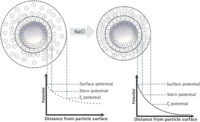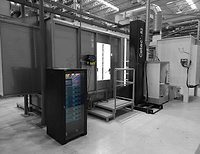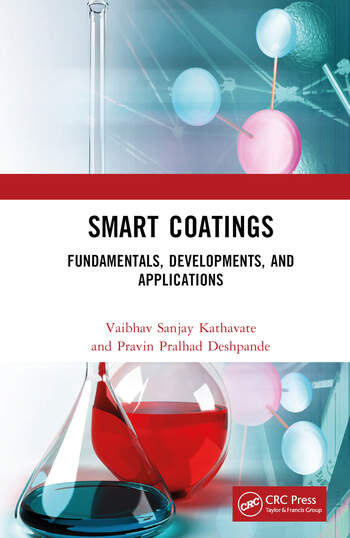Smart Paint Signals When Equipment is Too Hot to Handle

NEWARK, NJ - Researchers at the New Jersey Institute of Technology (NJIT) have developed a paint for use in coatings and packaging that changes color when exposed to high temperatures, delivering a visual warning to people handling material or equipment with the potential to malfunction, explode or cause burns when overheated.
The technology was commissioned and funded by the U.S. Army Armament Research Development and Engineering Center (ARDEC) at Picatinny Arsenal in response to dangerous conditions in the desert during the war in Iraq, for example, where soldiers reported temperatures near munitions that had sometimes exceeded 190 °F, far in excess of the shells’ design limits.
“It would have been helpful to have had some sort of a calibrated temperature-triggered signal warning, ‘Don’t go near or pick up this shell,’” said Zafar Iqbal, a Research Professor in the Department of Chemistry and Environmental Science, who led the joint NJIT/ARDEC research team. Referred to as a “thermal-indicating composition” and applied as a coating or a mark on packaging, the material turns different shades of color from blue to red in response to a range of temperatures, beginning at about 95 °F. It was awarded a U.S. patent in May of this year.
“We essentially modified commercial paints and introduced nanotechnology-based concepts to tailor the trigger temperatures,” Iqbal explained, adding that his laboratory is starting to develop inks related to the paints that can be applied by inkjet printers.
His current research came out of earlier work at Honeywell, then Allied Corp., leading to a smart coating embedded with color-sensitive materials that indicated how long a substance had been exposed to temperatures high enough to compromise its functionality. The time-temperature device has been widely used by the World Health Organization, for example, on vaccine packaging labels.
Time-temperature coding is also important for munitions, which can be stored for many years and transported long distances. Until now, there has been no cost-effective means for identifying when munitions have experienced critical exposures, including over a period of several days. Thermal stabilizers incorporated in weapon containers can be depleted by extended exposure to high temperatures. Iqbal said the coding will be included in the thermal-indicating paints as an element of the final product for the Army.
The technology has potentially wider applications as well, including as a temperature indicator for factory machines and household appliances and tools signaling they have become dangerously hot, or as a warning to firefighters of the intensity of a fire on the other side of a door coated with the thermal paint. Several large corporations expressed preliminary interest in it at a recent expo. The patent is jointly owned by NJIT and the U.S. Army; NJIT plans to commercialize the technology.
Iqbal, who is currently working on a book entitled “Nanomaterials Science and Technology” to be published by Cambridge University Press, has been awarded 22 U.S. patents on a wide range of technologies.
He has collaborated with the U.S. Army over the years since joining the Feltman Research Laboratory at Picatinny Arsenal in New Jersey in 1969, two years after earning his Ph.D. at Cambridge University, where he conducted research at the renowned Cavendish Lab, the site of such major scientific advances as the discovery of the electron and the double-helix structure of DNA. He was a research scientist for the Army until 1977, before he returned to teaching and research for several years and then served as a Senior Principal Scientist and Project Manager for nearly 20 years at Honeywell and its predecessor companies, Allied and Allied Signal, before joining NJIT.
Iqbal is currently developing a related technology that would signal whether a product has been damaged by force, shock or exposure to dangerous chemicals, such as carcinogens, or to radiation.
“A smart coded coating is like a smart skin – it will provide a visual or sensing signal to tell you if there is a problem,” he says, noting that sports helmets used in American football would be one potential application, helping coaches to determine whether a player has received a damaging blow to the head.
Looking for a reprint of this article?
From high-res PDFs to custom plaques, order your copy today!







